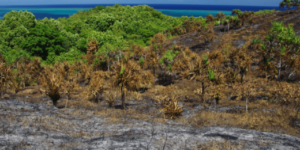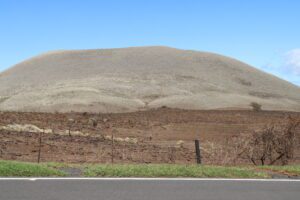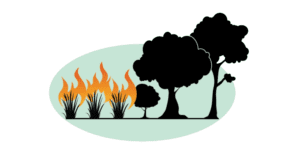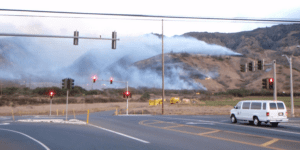Predictions for El Nino’s effects on climate and wildfire in the Pacific (2015). DOWNLOAD PDF
This guide provides methods for monitoring changes in soil and vegetation after a wildfire occurs.
Makapu‘u is the easternmost part of the island of Oahu. Its an iconic area, famous for its beaches and the trail out to the lighthouse.
After fire, it is critical to understand the different environmental zones at risk and potential costs and benefits of different techniques (Source: 2014 Wahikuli-‐Honokōwai Wildfire Mitigation Plan, Hawai`i Wildfire Management Organization). Tags:…
DOWNLOAD PDF
A summary of wildfire in Hawai‘i (2014) including statewide ignitions, wildfire occurrence in the past century and management implications.
In September 2003, a wildfire burned about 10 acres of Hawaiian mesic forest on Kumaipo ridge between the Waianae Kai Forest Reserve and Makaha Valley on western Oahu.
Learn the perspectives of Amy Tsuneyoshi and Kaimana Wong from the Honolulu Board of Water Supply (HBWS) and Mikaela Bolling from the Waianae Mountain Watershed Partnership (WMWP) with respect to fire breaks and fire prevention.
Fountain grass is an invasive, highly flammable ornamental plant that has overtaken the dry, tropical ecosystems of west Hawaii. Over the last several decades, large, fast spreading fountain grass fires have burned across the landscape with increasing frequency, usually ignited by roadside activities in remote areas. The Pu’u Anahulu Fuels Management Project evaluated the effectiveness of different roadside fuels treatments on fountain grass using a collaborative approach, and allowed the first use of science-based fuels treatments and prescribed fire in Hawaii. Demonstration sites were established along roadsides where ignitions were known to occur. The clear winner for sustained reduction of fountain grass was a three stage application of prescribed fire, grazing and herbicide.
This project was developed and carried out by SWCA Environmental Consultants (SWCA) to determine the effectiveness of three different methods in reducing the surface fuel loads in a guinea grass (Panicum maximum) dominated community, thereby reducing susceptibly to sustained fires. Three control treatments were tested including mechanical removal, herbicide application and grazing using cattle to reduce the fuel loads at Marine Corps Training Area Bellows (MCTAB), on the island of O‘ahu, Hawai‘i. Information on the cost of the various control treatments and their long-term effectiveness in maintaining reduced fuel loads would also benefit land and resource managers in the Pacific Islands where guinea grass and frequent fires are problematic.




